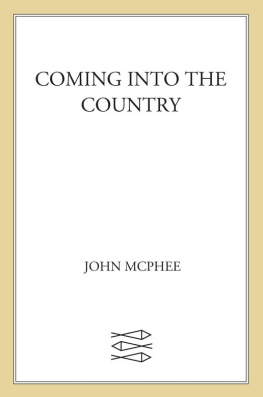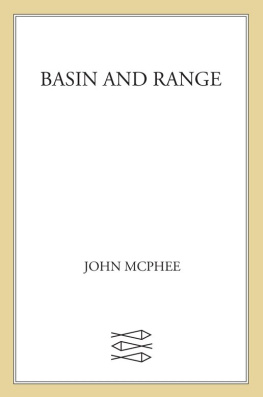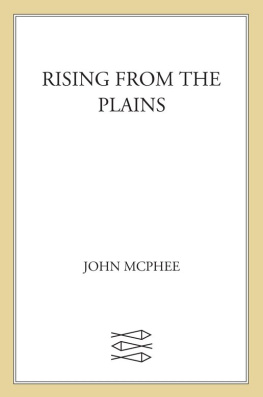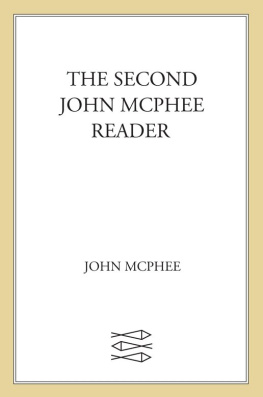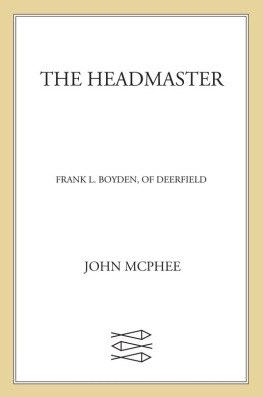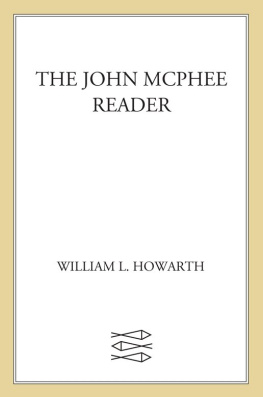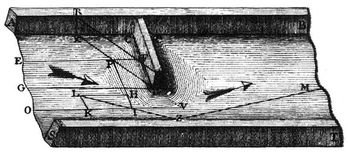
THREE HUNDRED MILES up the Mississippi River from its mouthmany parishes above New Orleans and well north of Baton Rougea navigation lock in the Mississippis right bank allows ships to drop out of the river. In evident defiance of nature, they descend as much as thirty-three feet, then go off to the west or south. This, to say the least, bespeaks a rare relationship between a river and adjacent terrainany river, anywhere, let alone the third-ranking river on earth. The adjacent terrain is Cajun country, in a geographical sense the apex of the French Acadian world, which forms a triangle in southern Louisiana, with its base the Gulf Coast from the mouth of the Mississippi almost to Texas, its two sides converging up here near the lockand including neither New Orleans nor Baton Rouge. The people of the local parishes (Pointe Coupee Parish, Avoyelles Parish) would call this the apex of Cajun country in every possible senseno one more emphatically than the lockmaster, on whose face one day Inoticed a spreading astonishment as he watched me remove from my pocket a red bandanna.
You are a coonass with that red handkerchief, he said.
A coonass being a Cajun, I threw him an appreciative smile. I told him that I always have a bandanna in my pocket, wherever I happen to bein New York as in Maine or Louisiana, not to mention New Jersey (my home)and sometimes the color is blue. He said, Blue is the sign of a Yankee. But that red handkerchiefwith that, you are pure coonass. The lockmaster wore a white hard hat above his creased and deeply tanned face, his full but not overloaded frame. The nameplate on his desk said RABALAIS.
The navigation lock is not a formal place. When I first met Rabalais, six months before, he was sitting with his staff at 10 A.M. eating homemade bread, macaroni and cheese, and a mound of rice that was concealed beneath what he called smoked old-chicken gravy. He said, Get yourself a plate of that. As I went somewhat heavily for the old chicken, Rabalais said to the others, Hes pure coonass. I knew it.
If I was pure coonass, I would like to know what that made RabalaisNorris F. Rabalais, born and raised on a farm near Simmesport, in Avoyelles Parish, Louisiana. When Rabalais was a child, there was no navigation lock to lower ships from the Mississippi. The water just poured outboats with itand flowed on into a distributary waterscape known as Atchafalaya. In each decade since about 1860, the Atchafalaya River had drawn off more water from the Mississippi than it had in the decade before. By the late nineteen-forties, when Rabalais was in his teens, the volume approached one-third. As the Atchafalaya widened and deepened, eroding headward, offering the Mississippi an increasingly attractive alternative, it was preparing for nothing less than an absolute capture:before long, it would take all of the Mississippi, and itself become the master stream. Rabalais said, They used to teach us in high school that one day there was going to be structures up here to control the flow of that water, but I never dreamed I was going to be on one. Somebody way back yonderwhich is dead and gone nowvisualized it. We had some pretty sharp teachers.
The Mississippi River, with its sand and silt, has created most of Louisiana, and it could not have done so by remaining in one channel. If it had, southern Louisiana would be a long narrow peninsula reaching into the Gulf of Mexico. Southern Louisiana exists in its present form because the Mississippi River has jumped here and there within an arc about two hundred miles wide, like a pianist playing with one handfrequently and radically changing course, surging over the left or the right bank to go off in utterly new directions. Always it is the rivers purpose to get to the Gulf by the shortest and steepest gradient. As the mouth advances southward and the river lengthens, the gradient declines, the current slows, and sediment builds up the bed. Eventually, it builds up so much that the river spills to one side. Major shifts of that nature have tended to occur roughly once a millennium. The Mississippis main channel of three thousand years ago is now the quiet water of Bayou Teche, which mimics the shape of the Mississippi. Along Bayou Teche, on the high ground of ancient natural levees, are Jeanerette, Breaux Bridge, Broussard, Olivierarcuate strings of Cajun towns. Eight hundred years before the birth of Christ, the channel was captured from the east. It shifted abruptly and flowed in that direction for about a thousand years. In the second century A.D., it was captured again, and taken south, by the now unprepossessing Bayou Lafourche, which, by the year 1000, was losing its hegemonyto the rivers present course, through the region that would be known as Plaquemines. By the nineteen-fifties, the Mississippi River had advanced so far past New Orleans and out into the Gulf that it was about to shift again, and its offspring Atchafalaya was ready to receive it. By the route of the Atchafalaya, the distance across the delta plain was a hundred and forty-five mileswell under half the length of the route of the master stream.
For the Mississippi to make such a change was completely natural, but in the interval since the last shift Europeans had settled beside the river, a nation had developed, and the nation could not afford nature. The consequences of the Atchafalayas conquest of the Mississippi would include but not be limited to the demise of Baton Rouge and the virtual destruction of New Orleans. With its fresh water gone, its harbor a silt bar, its economy disconnected from inland commerce, New Orleans would turn into New Gomorrah. Moreover, there were so many big industries between the two cities that at night they made the river glow like a worm. As a result of settlement patterns, this reach of the Mississippi had long been known as the German coast, and now, with B. F. Goodrich, E. I. du Pont, Union Carbide, Reynolds Metals, Shell, Mobil, Texaco, Exxon, Monsanto, Uniroyal, Georgia-Pacific, Hydrocarbon Industries, Vulcan Materials, Nalco Chemical, Freeport Chemical, Dow Chemical, Allied Chemical, Stauffer Chemical, Hooker Chemicals, Rubicon Chemicals, American Petrofinawith an infrastructural concentration equalled in few other placesit was often called the American Ruhr. The industries were there because of the river. They had come for its navigational convenience and its fresh water. They would not, and could not, linger beside a tidal creek. For nature to take its course was simply unthinkable. The SixthWorld War would do less damage to southern Louisiana. Nature, in this place, had become an enemy of the state.
Rabalais works for the U.S. Army Corps of Engineers. Some years ago, the Corps made a film that showed the navigation lock and a complex of associated structures built in an effort to prevent the capture of the Mississippi. The narrator said, This nation has a large and powerful adversary. Our opponent could cause the United States to lose nearly all her seaborne commerce, to lose her standing as first among trading nations . We are fighting Mother Nature . Its a battle we have to fight day by day, year by year; the health of our economy depends on victory.



